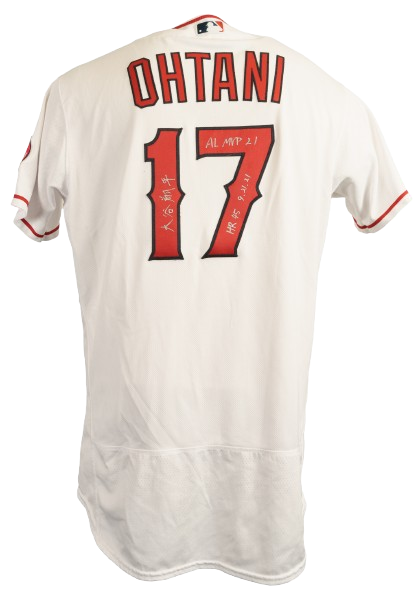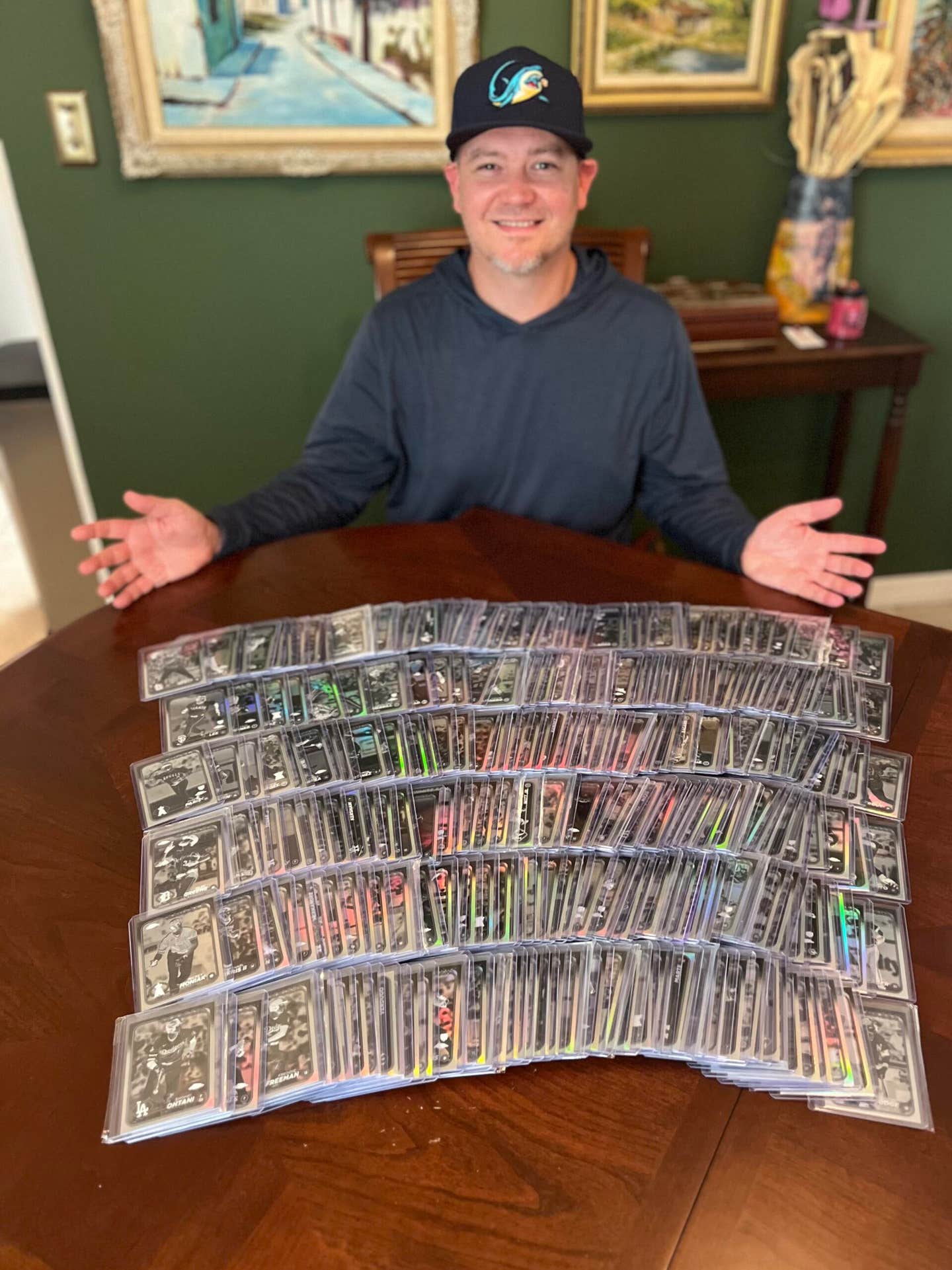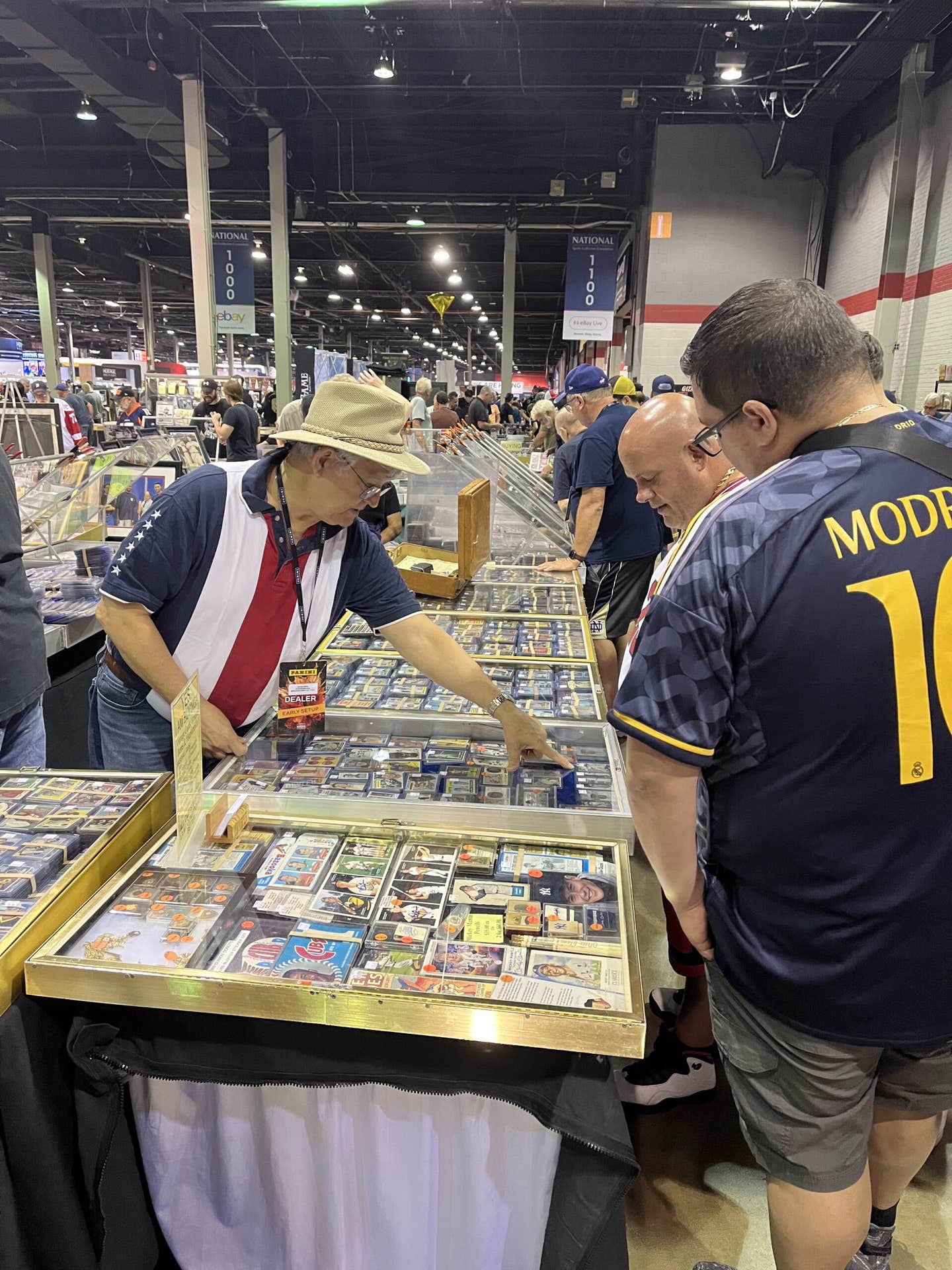News
World’s most complete Jewish baseball card collection
When Seymour Stoll was young, he loved collecting baseball cards.
One day when he was 14, Stoll opened a pack of Topps and pulled a card of Los Angeles Dodgers great Sandy Koufax. With Stoll being Jewish, he was excited to acquire a card of a well-known player with the same culture.
Stoll went to show his dad his cardboard treasure.
“He said to me, ‘Why don’t you collect all of the Jewish players?’” Stoll recalled. “I said, ‘Well, this will be pretty easy.’ It’s like the joke with the thinnest book on Earth with the Jewish athletes in it. So, I figured it would take me like a couple of weeks, a month or two. It ended up taking me 45 years to do everything. My father challenged me to do it.”
It’s been Stoll’s labor of love ever since. The 67-year-old now owns the most complete Jewish baseball card collection in the world, having at least one card of every Jewish player who has ever played in the majors.
As of the end of the 2019 season, there have been a confirmed 177 Jewish players and another 14 whom Stoll calls “Jewish players in doubt” – it isn’t known for sure if that player’s mother or father was Jewish. But Stoll includes the 14 in his figure to make it 191 players. He said that is approximately 1 percent of the total of all players who have ever played in the major leagues up to this season.
“It’s a small amount but a lot of highlights from players that have made a difference in the major leagues,” Stoll said. “It was a labor of love. A lot of people laughed at me when I did it. They’d say, ‘What, are you crazy?’ You pay $5 for a card or something and then who knows – later on the explosion of the vintage card market and now some of the prices are just prohibitive. It just goes to show, you have to collect what you love, not for the money.”
Stoll, who is a physician living in Beverly Hills, Calif., certainly loves his Jewish card collection, in which he says he has just over 500 total cards of those 191 players.
Stoll has the most cards of Koufax – he has all the mainstream versions but not all the inserts over the years – and Detroit Tigers slugger Hank Greenberg. The two MLB Hall of Famers are a nice feather in the cap for Jewish baseball.
“The superstar cards are obviously the easiest to get because there were more cards made of them,” Stoll said. “A lot of the players only had one card that were ever made for them and some didn’t even have major league cards made – their only card was in a minor league series. But even if they had a minor league card and they played in the major leagues, I included that card in the collection.”
Perhaps the third-most famous Jewish baseball player ever is Dodgers pitcher Larry Sherry. He was named the MVP of the 1959 World Series for winning two games and saving two more. No other pitcher in MLB history has had a decision in all four wins of a World Series.
Ron Blomberg became a household baseball name in 1973 when the New York Yankee became the first designated hitter in MLB history. He walked with the bases loaded to also tally an RBI. The bat that Blomberg used in that game is now part of the National Baseball Hall of Fame and Museum in Cooperstown, N.Y.
A number of cards and players have been extremely difficult for Stoll to track down over the years; one of those players was Levi Meyerle of the Philadelphia Athletics. Named one of the five best baseball players of the 19th Century, Meyerle’s lone card was a tintype from 1867.
“What’s great about this is he was the very first batting champion in 1871,” Stoll said. “His tintype was used by Ken Burns in his baseball special.”
There are only two Meyerle tintype’s to exist in the world, so the chase was intense for Stoll.
About 25 to 30 years ago, Stoll was referred to by a private collector to contact a card and memorabilia collector who was diversifying his collection and was getting rid of his tintypes. Stoll called the guy and explained what he was doing with his Jewish card collection. Stoll bought the rare tintype for $750.
“As soon as I bought it, a week later other collectors found out about it and got all of these offers for thousands and thousands of dollars to sell,” Stoll said. “Of course, I never will. Today, the price just went up like crazy.”
Stoll had the tintype appraised a couple years ago by a museum worker for between $250,000-$300,000. That’s certainly the most expensive card in Stoll’s collection.
The only other Meyerle tintype that exists in the world is housed in a museum in London.
The first Jewish baseball player to ever get to the majors was Lipman Pike. He won the first home run championship in 1871 in the National Association and six years later won the title with four home runs during the “dead ball” era.
“He was a phenomenal player,” Stoll said. “In fact, he was so good that when the inaugural class to be inducted into the Baseball Hall of Fame was chosen, he received some votes. He was voted one of the five greatest players of the 19th Century.”
Philip Weintraub is another Jewish player whose card is extremely hard to find. The exceptional player for the New York Giants and Brooklyn Dodgers in the 1930s, Weintraub’s card appeared in a rare series in Canada, World Wide Gum, sold by the Goudey company in 1936.
There were 134 cards in the series and a rumor that an extra card was added. Years later it surfaced that the extra card was of Weintraub. Stoll searched for years but couldn’t track down the scarce Weintraub card.
Stoll went to a card show in California where a Canadian exhibitor was selling. Stoll got to talking with the guy, who said he’d heard about the Weintraub and he had three or four cards from the World Wide Gum series. He asked Stoll if he wanted to see the cards.
“I’m thinking, three or four cards, what’s the odds I’m going to get (Weintraub)?” Stoll said. “The last card that I looked at was it. I was so excited I wanted to jump up and down and scream. I said, ‘No problem. I’ll take it.’”
The Weintraub is a known short print, and it’s the only example of the card that Stoll has ever seen.
According to Stoll, it wasn’t uncommon for Jewish players to battle anti-Semitism during their careers and were subject to be blackballed. Some players changed their surname, which was the case with Phil Cohen. Before entering the majors, he switched his last name to Cooney. He ended up playing one game in the majors for the New York Highlanders, which later became the Yankees.
Cooney’s lone card is in the 1911 Obak series. It’s really hard to track down since he went by Cooney.
“If you can find the card, you’d pay an extremely large price for it because it just doesn’t exist,” Stoll said.
Stoll picked up his copy of the Cooney card by trading with a private collector.
Max Rosenfeld played for the Brooklyn/Robins Dodgers in the early 1930s. He was an up-and-coming star, but he couldn’t break the starting lineup, so he became a manager. Rosenfeld’s lone card is from the Los Reyes del Deporte series from Havana Cuba in 1946. Stoll said the paper on the cards from that series were so thin that they disintegrate. Stoll happened to meet a guy from Havana who moved to Miami and had a copy of the Rosenfeld card. The two worked out a deal.
Another interesting story belonged to Harry Chozen, a member of the Cincinnati Reds. The organization was so anti-Semitic in the 1930s that it boasted no Jew would ever play for the big league team. One season he was named the Triple-A player of the year, so the Reds had to bring up the catcher. Without getting in a game the entire season, Chozen was penciled in the lineup for the last game, No. 154. He went 1 for 4 and was sent back to the minors. He was never heard from again on the diamond.
Fifty years after Chozen’s one major league game in 1937, Stoll tracked him down in New Orleans and called him. Chozen felt so bad about how he was treated by the Reds that he tried to just forget about baseball. There was never a professional baseball card made of Chozen. However, Stoll was granted a big surprise when he talked to the ex-ballplayer.
“‘I just so happen to have some cards that, my family felt so bad, they made my own baseball card for me,’” Stoll said, quoting Chozen. “‘I call it the card that never was. It shows me in my Cincinnati Reds uniform and my statistics on the back.’ He says, ‘Would you like one?’ I said, ‘You bet I would.’ Two weeks later he sent me a signed card, so I have that in the collection as well.”
Elliott Maddox is the only African American Jewish player to ever play Major League Baseball. He lasted from 1970-80, most notably for the Yankees.
Some more recent Jewish players include Milwaukee Brewers outfielder Ryan Braun, Dodgers outfielder Joc Peterson, Houston Astros infielder Alex Bregman and newly retired Ian Kinsler.
Showing off his impressive collection
Since Stoll has the most complete Jewish collection in the world, he loves to have it on display for everyone to see.
Stoll allows museums around the country to put his full collection on exhibition. It has been in 11 museums so far, starting with the National Museum of American Jewish History in Philadelphia. It then went to the Maltz Museum of Jewish Heritage in Cleveland before moving to the Skirball Cultural Center in Los Angeles. It has also been exhibited in pop-up versions all over the United States, including New York, Miami, Chicago and Milwaukee.
“Since we started the exhibitions in 2014, we’ve generated almost $10 million in ticket sales for the museum and charities,” said Stoll, who has about 10,000 non-Jewish baseball cards in his collection. “The interest, obviously, is there.”
Stoll also likes to have the pop-up version of his collection out at community centers, libraries and synagogues.
“I want to share this with everybody because it made me feel good,” Stoll said.
When his collection is not set up in a museum, Stoll has it stored in a bank vault in California. He’s currently in negotiations with a handful of museums to have the collection on display later this year or in 2021.
Whenever his collection is on display, Stoll travels to the museum to check it out. He’s always astonished to see his work set up at a prestigious museum for everyone to admire.
“It’s fulfilling,” Stoll said. “Everybody loves something whether you’re young, you’re old, and it gives you a sense of pride of what the baseball players did to integrate Jews into society. In the old days, they would be blackballed and had to hide their Jewish heritage. Today, they’re welcomed with open arms. It shows the evolution of the game, the evolution towards the feelings of Jewish players and the country in general.”
Stoll plans to continue adding to his collection in the coming years until it’s time to pass it along to the next generation.
When Stoll started collecting cards of Jewish players over 50 years ago, he never thought it would become such a wonderful project.
“It took on a life of its own,” Stoll said. “It really kept growing and growing and growing. I’m amazed. But I’m very, very happy.”








